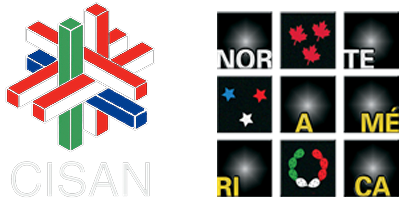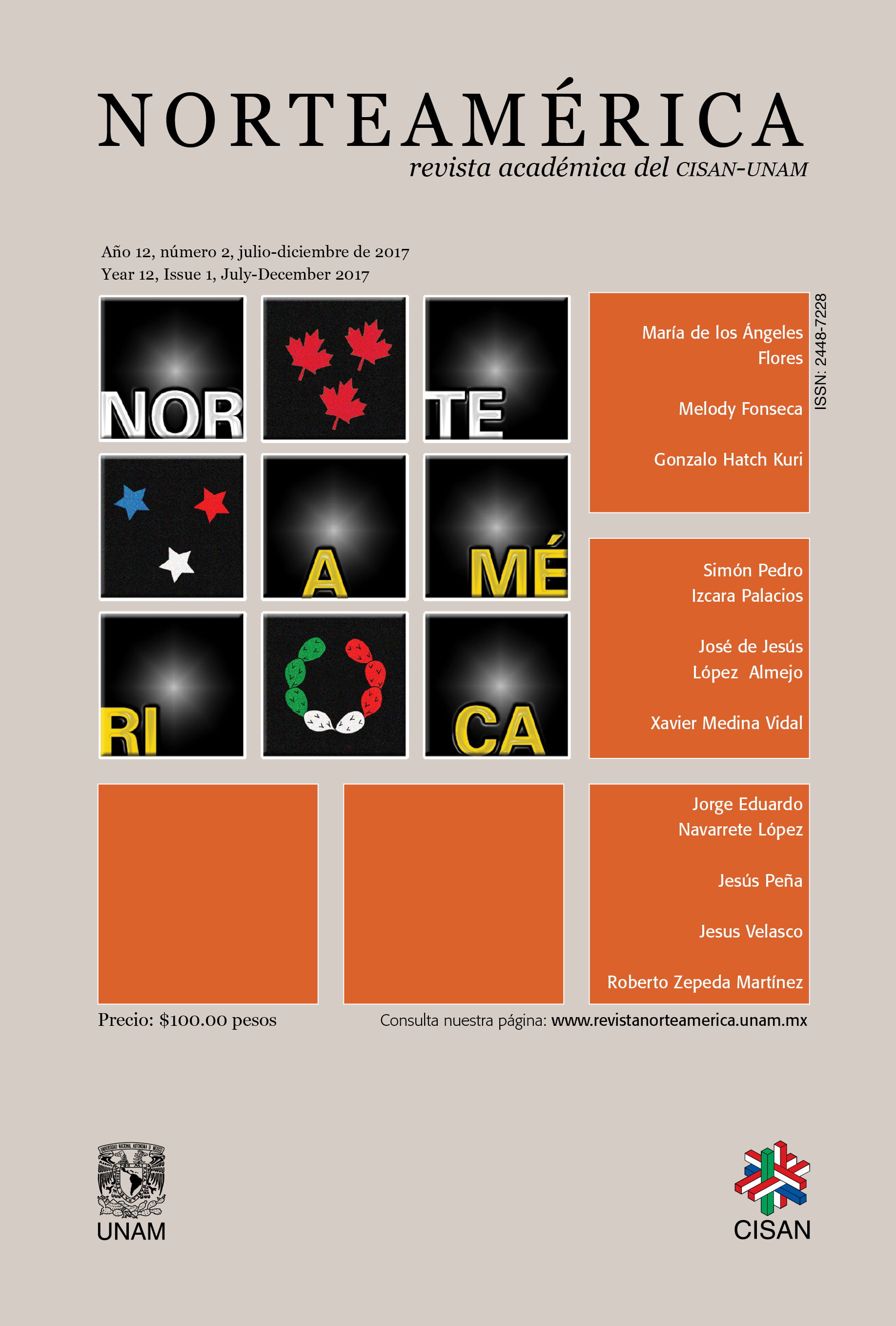Abstract
The etiology of migrant smuggling has been ascribed to the growth of transnational organized crime, the demand of migrants’ social networks, and employer demand. Studies based on secondary sources tend to link this activity to transnational organized crime, while those based on primary sources argue that it is not organized-crime operated. This article, based on primary sources, underlines the preeminence of pull factors (the demand for migrant labor by U.S. employers), because, after interviewing 170 migrant smugglers between 2008 and 2015 (mainly from the Mexico’s Northeast), the author found that in almost nine out of ten cases, U.S. employers played a fundamental role in financing or hiring undocumented migrants.
References
Andreas, Peter
Smuggler nation: How illicit trade made America, Oxford University Press, New York.
Carrasco González, Gonzalo
“La migración centroamericana en su tránsito por México hacia los Estados Unidos”, en Alegatos-Revista Jurídica de la Universidad Autónoma Metropolitana, vol. 83, pp. 169-194.
Comisión Nacional de Derechos Humanos
Informe especial sobre los casos de secuestro en contra de migrantes. México, 15 de Junio de 2009. Disponible en: http://www.cndh.org.mx/INFORMES/Especiales/infEspSecMigra.pdf, consultado el 11 de junio de 2016.
Comisión Nacional de Derechos Humanos
Informe especial sobre secuestro de migrantes en México. México, 22 de Febrero de 2011. Disponible en: http://www.cndh.org.mx/sites/all/fuentes/documentos/informes/especiales/2011_secmigrantes.pdf, consultado el 11 de junio de 2016.
Fuentes, Jazmín y Olivia García
“Coyotaje: The Structure and Functioning of the People-Smuggling Industry”, Four generations of norteños. New Research from the Cradle of Mexican Migration, W.A. Cornelius, D. Fitzgerald y S. Borger, eds., Centre for Comparative Immigration Studies, La Jolla, California, pp. 79-100.
Gallagher, Anne
“Trafficking, smuggling and human rights: tricks and treaties”, en Forced Migration Review, vol. 12, pp. 25-28.
General Accounting Office (GAO)
Alien Smuggling. DHS Needs to Better Leverage Investigative Resources and Measure Program Performance along the Southwest Border. United States Government Accountability Office. Report to Congressional Requesters GAO-10-328. Disponible en: http://www.gao.gov/new.items/d10328.pdf, consultado el 27 de junio de 2016.
Holmes, Seth M.
Fresh fruit, broken bodies. Migrant farmworkers in the United States, University of California Press, Los Angeles, California.
House Committee on Homeland Security (HCHS)
A Line in the Sand: Confronting the Threat at the Southwest Border. Subcommittee on Investigations.
Kyle, David y John Dale
“Smuggling the State Back In: Agents of Human Smuggling Reconsidered”, en Global Human Smuggling. Comparative Perspectives, David Kyle y R. Koslowski, eds., The Johns Hopkins University Press, Baltimore, Maryland, pp. 33-59.
Kyle, David y Marc Scarcelli
“Migrant smuggling and the violence question: evolving illicit migration markets for Cuban and Haitian refugees”, en Crime, Law and Social Change, vol. 52, núm. 3, pp. 297-311.
López Castro, Gustavo
“Coyotes and alien smuggling”, en Binational study Migration between Mexico and the United States, vol. 3, US Commission on Immigration Reform, pp. 965-974.
Massey, Douglas S., Durand, Jorge y Malone, Nolan J.
“Detrás de la trama. Políticas migratorias entre México y Estados Unidos”, Miguel Ángel Porrúa, México.
Meneses, Guillermo Alonso
El desierto de los sueños rotos. Detenciones y muertes de migrantes en la frontera México-Estados Unidos 1993-2013, El Colegio de la Frontera Norte, Tijuana.
Menjívar, Cecilia y Leisy Abrego
“Legal Violence: Immigration Law and the Lives of Central American Immigrants”, en American Journal of Sociology, vol. 117, núm. 5, pp. 1380-1421.
Naciones Unidas
Convención de las Naciones Unidas contra la delincuencia organizada transnacional y sus protocolos, Nueva York, Oficina de las Naciones Unidas contra la droga y el delito. Disponible en: http://www.cinu.mx/minisitio/Trafico_migrantes/Conv_Delincuencia_Org.pdf, consultado el 1 de agosto de 2016.
Parks, Kristen, Gabriel Lozada, Miguel Mendoza y Lourdes García Santos
“Strategies for Success: Border Crossing in an Era of Heightened Security”, en Migration from the Mexican Mixteca. A Transnational Community in Oaxaca and California, W.A. Cornelius, D. Fitzgerald, J. Hernández-Díaz, y B. Scott, eds, Centre for Comparative Immigration Studies, La Jolla, California, pp. 31-61.
Sánchez, Gabriella
“Human smuggling facilitators in the US southwest”, en The Routledge Handbook on Crime and International Migration, S. Pickering y J. Ham, eds., Routledge, Nueva York, pp.275-286.
Sánchez, Gabriella
“Women’s Participation in the Facilitation of Human Smuggling: The Case of the US Southwest”, en Geopolitics, vol. 21, núm. 2, pp. 387-406.
Sandoval, Gerardo Francisco
“Shadow Transnationalism: Cross-Border Networks and Planning Challenges of Transnational Unauthorized Immigrant Communities”, en Journal of Planning Education and Research, vol. 33, núm. 2, pp. 176-193.
Sharma, Nandita
“Anti-Trafficking Rhetoric and the Making of a Global Apartheid”, NWSA Journal, vol. 17, núm. 3, pp. 88-111.
Shelley, Louise
“The relationship of drug and human trafficking: A global perspective”, en Eur J Crim Policy Res, vol. 18, núm. 241-253.
Slack, Jeremy y Scott Whiteford
“Violence and Migration on the Arizona-Sonora Border”, en Human Organization, vol. 70, núm. 1, pp. 11-21.
Slack, Jeremy y Scott Whiteford
“Caught in the Middle. Undocumented Migrants’ Experiences with Drug Violence”, en A War that can´t be won. Binational perspectives on the war on drugs, T. Payan, Staudt y Z.A. Kruzewski, eds., The University of Arizona Press, Arizona, pp. 193-213.
Slack, Jeremy
“Captive bodies: migrant kidnapping and deportation in Mexico”, en Area, vol. 48, núm. 3, pp. 271-277.
Slack, Jeremy y Howard Campbell
“On Narco-coyotaje: Illicit Regimes and Their Impacts on the US–Mexico Border”, en Antipode. DOI: 10.1111/anti.12242
Spener, David
El contrabando de migrantes en la frontera de Texas con el nordeste de México: mecanismo para la integración del mercado laboral en América del norte. Espiral. Estudios sobre Estado y Sociedad, vol. 7, núm 21, pp. 201-247.
Spener, David
“Mexican Migrant-Smuggling: A Cross-Border Cottage Industry”, en Journal of International Migration and Integration, vol. 5, núm. 3, pp. 295-320.
Spener, David
Clandestine Crossings: Migrants and Coyotes on the Texas-Mexico Border, Cornell University, New York.
Stephen, L.
“Vigilancia e invisibilidad en la vida de los inmigrantes indígenas mexicanos que trabajan en Estados Unidos”, en Migración, fronteras e identidades étnicas transnacionales, L. Velasco Ortiz, ed., Miguel Ángel Porrúa, México, pp. 197-238.
Thompson, Albert N.
“The Mexican Immigrant Worker in Southwestern Agriculture”, en American Journal of Economics and Sociology, vol. 16, núm. 1, pp. 73-81.
United States Department of Homeland Security (USDHS)
2013 Yearbook of Immigration Statistics, U.S. Department of Homeland Security, Office of Immigration Statistics, Washington DC.
Vogt, Wendy A.
“Crossing Mexico: Structural violence and the commodification of undocumented Central American migrants”, en American Ethnologist, vol. 40, núm. 4, pp. 764-780.
Zhang, Sheldon y Ko Lin Chin
“Enter the Dragon: Inside Chinese Human Smuggling Organizations”, Criminology, vol. 40, núm. 4, pp. 737-768.
Zhang, Sheldon, Ko Lin Chin y Jody Miller
“Women’s participation in Chinese Transnational Human Smuggling: A gendered market perspective”, en Criminology, vol. 5, núm. 3, pp. 699-733.
Authors who publish with this journal agree to the following terms:
Authors retain copyright and grant the journal right of first publication with the work simultaneously licensed under a Creative Commons Attribution License that allows others to share the work with an acknowledgement of the work's authorship and initial publication in this journal.
Authors are able to enter into separate, additional contractual arrangements for the non-exclusive distribution of the journal's published version of the work (e.g., post it to an institutional repository or publish it in a book), with an acknowledgement of its initial publication in this journal.
Authors are permitted and encouraged to post their work online (e.g., in institutional repositories or on their website) prior to and during the submission process, as it can lead to productive exchanges, as well as earlier and greater citation of published work.



